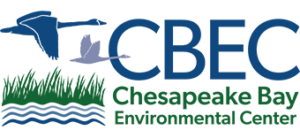 Mission
Mission
The mission of the Wildfowl Trust of North America, Inc. and its physical site, the Chesapeake Bay Environmental Center, is to promote stewardship and sustainability through environmental education and habitat restoration.
History
The Wildfowl Trust of North America Inc. was founded in 1979 with the intent to protect wetlands for waterfowl while maintaining captive waterfowl collections for educational purposes. In 1981 the Trust purchased a 315-acre farm tract in Grasonville, Maryland on which it initially established Horsehead Wetlands Center and opened to the public in 1985. In 1998 the trust purchased an additional 195 acres and placed the now 510-acre preserve under conservation easement.
In 2002 the Trust revamped its mission to address the issues of declining water quality, urban sprawl and habitat loss and set a goal to be recognized as a leader in environmental education and bay restoration. The site was renamed the Chesapeake Bay Environmental Center to reflect the new focus of the mission.
In 2004 the State of Maryland recognized there was a need to find more effective and efficient restoration methods in order to meet the 2010 Chesapeake Bay Agreement and beyond. CBEC was designated as “the”site for testing and developing comprehensive restoration techniques resulting in bay-wide implications. As a result, partnerships with private businesses, universities, state and federal governmental agencies have afforded CBEC the opportunity to expand research and restoration capabilities while encouraging stewardship through volunteerism.
In 2008 CBEC opened a new LEED certified arts and education facility to the meet the growing needs of its educational programs. The new facility itself is a teaching tool on sustainable building practices, serves as a model for green living on Eastern Shore, is a resource center for developers engaging in smart growth and a portal for visitors to admire the local culture through rotating art exhibits.
Vision
The Chesapeake Bay Environmental Center will serve as a model of environmental sustainability throughout its programming and operations while instilling a stewardship ethic through participation in multi-disciplinary, restoration-based educational experiences.
 Strategic Plan
Strategic Plan
The Chesapeake Bay Environmental Center has designed a strategic plan to guide its activities over the next ten years to best support the organization’s mission and vision. The plan outlines objectives and specific strategies to meet goals in four key program areas:
• Financial Stability
• Education
• Restoration
• Environmental Sustainability
Staff
Judy Wink
Executive Director
jwink@bayrestoration.org
Vicki Paulas
Assistant Director
vpaulas@bayrestoration.org
Michele Cesare
Business & Accounts Administrator
mcesare@bayrestoration.org
Anna Youngk
Education Coordinator
ayoungk@bayrestoration.org
Karen Bogue
Early Childhood Education Coordinator
kbogue@bayrestoration.org
Alissa Quinton
NASA-AREN STEM Program
aquinton@bayrestoration.org
Bobbie Hunt
Membership Coordinator
bhunt@bayrestoration.org
Anne and Dave Brunson
Volunteer Coordinators
volunteercoordinator@bayrestoration.org
Board of Trustees
Wildfowl Trust of North America, Inc.
As of: 08/11/2018
Carl J. Tenner, President
Merry Tobin, Vice President
William T. Bennett, Secretary
Heather Tinelli, Treasurer
Richard Jamison
Dr. John Kamp
Dolores Reyna
Ellen Mitchell
Donna Poindexter
Chris Rusco
Roy Hottel
 Mission
Mission
The mission of the Wildfowl Trust of North America, Inc. and its physical site, the Chesapeake Bay Environmental Center, is to promote stewardship and sustainability through environmental education and habitat restoration.
History
The Wildfowl Trust of North America Inc. was founded in 1979 with the intent to protect wetlands for waterfowl while maintaining captive waterfowl collections for educational purposes. In 1981 the Trust purchased a 315-acre farm tract in Grasonville, Maryland on which it initially established Horsehead Wetlands Center and opened to the public in 1985. In 1998 the trust purchased an additional 195 acres and placed the now 510-acre preserve under conservation easement.
In 2002 the Trust revamped its mission to address the issues of declining water quality, urban sprawl and habitat loss and set a goal to be recognized as a leader in environmental education and bay restoration. The site was renamed the Chesapeake Bay Environmental Center to reflect the new focus of the mission.
In 2004 the State of Maryland recognized there was a need to find more effective and efficient restoration methods in order to meet the 2010 Chesapeake Bay Agreement and beyond. CBEC was designated as “the”site for testing and developing comprehensive restoration techniques resulting in bay-wide implications. As a result, partnerships with private businesses, universities, state and federal governmental agencies have afforded CBEC the opportunity to expand research and restoration capabilities while encouraging stewardship through volunteerism.
In 2008 CBEC opened a new LEED certified arts and education facility to the meet the growing needs of its educational programs. The new facility itself is a teaching tool on sustainable building practices, serves as a model for green living on Eastern Shore, is a resource center for developers engaging in smart growth and a portal for visitors to admire the local culture through rotating art exhibits.
Vision
The Chesapeake Bay Environmental Center will serve as a model of environmental sustainability throughout its programming and operations while instilling a stewardship ethic through participation in multi-disciplinary, restoration-based educational experiences.
 Strategic Plan
Strategic Plan
The Chesapeake Bay Environmental Center has designed a strategic plan to guide its activities over the next ten years to best support the organization’s mission and vision. The plan outlines objectives and specific strategies to meet goals in four key program areas:
• Financial Stability
• Education
• Restoration
• Environmental Sustainability
Staff
Judy Wink
Executive Director
jwink@bayrestoration.org
Vicki Paulas
Assistant Director
vpaulas@bayrestoration.org
Michele Cesare
Business & Accounts Administrator
mcesare@bayrestoration.org
Anna Youngk
Education Coordinator
ayoungk@bayrestoration.org
Karen Bogue
Early Childhood Education Coordinator
kbogue@bayrestoration.org
Alissa Quinton
NASA-AREN STEM Program
aquinton@bayrestoration.org
Bobbie Hunt
Membership Coordinator
bhunt@bayrestoration.org
Anne and Dave Brunson
Volunteer Coordinators
volunteercoordinator@bayrestoration.org
Board of Trustees
Wildfowl Trust of North America, Inc.
As of: 08/11/2018
Carl J. Tenner, President
Merry Tobin, Vice President
William T. Bennett, Secretary
Heather Tinelli, Treasurer
Richard Jamison
Dr. John Kamp
Dolores Reyna
Ellen Mitchell
Donna Poindexter
Chris Rusco
Roy Hottel
